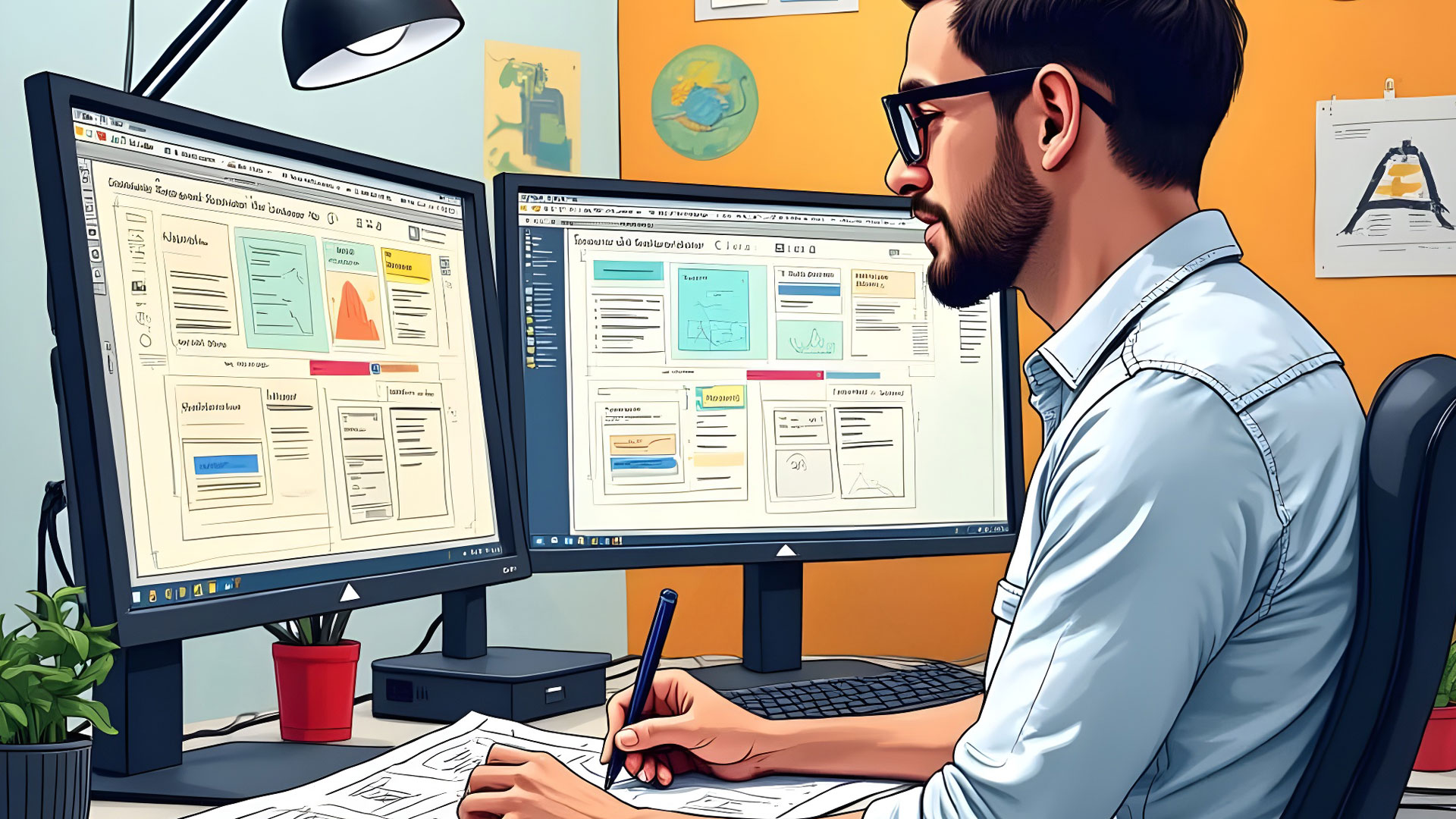When it comes to creating a beautiful website that offers a great digital experience, there’s one question that crops up time and again: is it more important for a design to look good, or function well?
It's tempting to go all-in on visuals. After all, beautiful designs turn heads and create those crucial first impressions. If your site looks polished, so does your brand. But if users can’t find what they’re looking for or get stuck on their journey, even the most sleek interface won’t make the cut. That said, a highly functional site with clunky visuals may never get the chance to impress in the first place.
So what do you prioritise – form or function?
What role does aesthetics play in UX/UI design?
Aesthetics are all about the visual and emotional appeal of a design. When something looks good, we naturally gravitate towards it. A well-considered colour palette, balanced layouts and clear visual hierarchy can create an emotional connection with users before they’ve even clicked a button.
Take, for example, a minimalist homepage with a clean layout, striking typography and a calming colour scheme. It doesn’t just look good, but it feels good to use. People tend to trust and stick with sites that look well put together and professional. There’s even something called the “aesthetic-usability effect,” which suggests that users perceive visually pleasing interfaces as better in terms of function (even if they’re not).
A gorgeous design can only take you so far though, especially if it hides a frustrating user journey. Flashy animations that slow down load times, or intricate layouts that bury important links can leave users feeling lost. And if they're feeling lost, they're more likely to leave.
Functionality first
At its core, functionality is about helping people achieve their goals. Whether it’s booking a holiday, buying a product or finding contact information, users want one thing – to get their task done quickly and easily.
Think about a retail site that showcases dazzling product images, but doesn't have a clear “Add to Basket” button. The design might look like a work of art, but it’s failing its most basic job.
That’s why functionality often comes above aesthetics in importance. A design must work first and foremost. From speedy load times and intuitive navigation, to accessibility and responsive layouts, a good user experience hinges on whether people can complete the tasks they came to do without friction.
We have worked on projects where a client’s website looked fantastic, but loaded painfully slowly on mobile. Users weren’t hanging around to see it all. By prioritising function, compressing images, simplifying navigation and cleaning up the code, we reduced the load time and saw bounce rates plummet.
It’s not one or the other – it’s both
Rather than thinking of aesthetics and functionality as opposing forces, the best digital experiences bring them together. The sweet spot lies in designs that are not only visually appealing but also intuitive, fast and user-friendly.
A good example of this is Airbnb’s interface. It’s clean and attractive, but also incredibly easy to use. Every element such as the search bar, filters and booking form has a clear purpose. It feels seamless, not because it’s trying to make a statement, but because it's thoughtfully designed around what users actually need.
That’s when the real magic happens: when aesthetics enhance usability, rather than fight against it.
How to design with both in mind
Creating this balance starts with understanding your users. Who are they? What do they need? And what challenges might they face?
You might be designing for someone on a slow 4G connection, or someone with limited vision who is navigating by screen reader. Consider those scenarios early and often. If you can’t meet users where they are, your design – no matter how lovely – just won’t work for them.
Next, test your assumptions. Don’t just guess what people will find intuitive. Do user interviews and test users interacting with your product. Watch them using it. See where they hesitate, where they click, and where they give up. You’ll be amazed at what you learn when real people get their hands on your design.
And finally, keep things consistent. Creative flourishes are great, but users should never have to re-learn how to use your interface from one page to the next. Establish a design system, stick to a clear visual hierarchy, and always make sure your calls to action are clear and accessible.
The takeaway: build for people, not just pixels
A well-designed interface doesn’t just look nice, it should work seamlessly, too. It should guide users effortlessly from point A to B, without confusion or clutter. Yes, aesthetics matter. But without a solid functional foundation, even the prettiest design will fall flat.
At our agency, we believe that the best digital products are rooted in empathy. They’re designed with real people in mind. And when you strike that perfect balance between form and function, you don’t just impress users – you keep them coming back.








